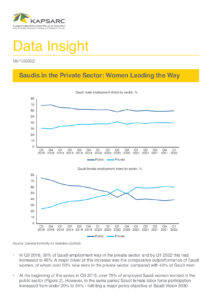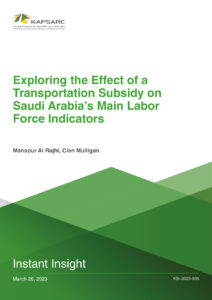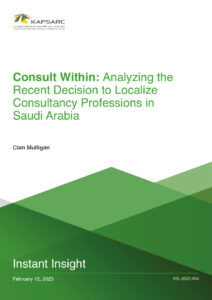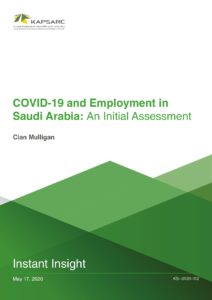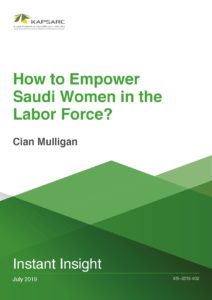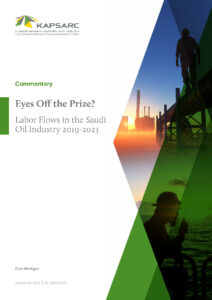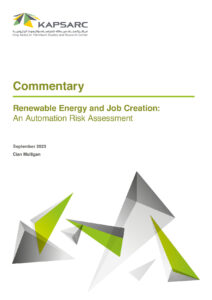Cian has been a member of the Energy Macro- and Microeconomics team since March 2018. Focusing on analyzing the employment benefits of the energy transition, he has authored a series of studies that shed light on issues relevant to the modern Saudi labor market in light of Saudi Vision 2030. His recent research interests include analysis of green jobs in Saudi Arabia, Saudi female labor force participation, and optimizing local content policy design. He has presented research at multiple international conferences and worked and studied in the Netherlands, the United Kingdom, Spain, Italy, Germany, Austria, and Taiwan, as well as his native country of Ireland.
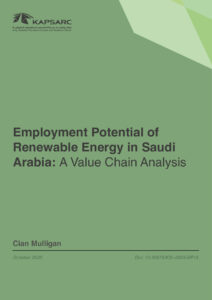
Employment Potential of Renewable Energy in Saudi Arabia: A Value Chain Analysis
Localization and local content mandates are an increasing presence in the global investment landscape, and the development of local content policy in Saudi Arabia will be an important factor in the lasting legacy of Vision 2030. While virtually all industries are targeted by local content mandates in Saudi Arabia, a sector tipped for strict targets and maximum local value added is renewable energy production. This is no surprise, as the abundant natural resources of sun and wind make the Kingdom well placed to be globally competitive in the sector, and as the industry is still in its infancy, an opportunity exists to localize from the ground up. This paper looks at the employment possibilities across the value chain of solar PV and onshore wind and, applying the unique characteristics of the Saudi labor force, investigates where localization mandates should target in order to optimize the benefits to the Saudi economy.
22nd October 2023

